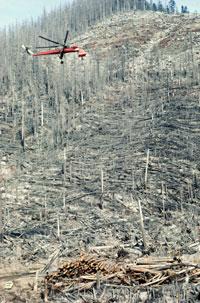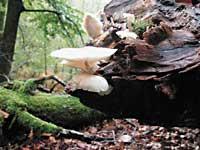The forest has been burned. Is it so serious?
2004/04/04 Roa Zubia, Guillermo - Elhuyar Zientzia
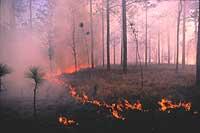
Jumping from one tree to another, a crazy calcination race begins. Shrubs, ferns, moss, grass, all consumed. And with them many animals. Many others have escaped running, flying or dragging. But most didn't go where to go.
Fire has caused a real disaster
When the fire has calmed down, fumes and ashes are the dimensions of the slaughter. There is a large blackened area where it was previously closed. Probably, foresters, technicians, etc. are calculating economic loss from deterioration.
In these cases, and if allowed, the forest responds. In short, nature has a more elaborate protocol than man to deal with these cases. And it is that the forest has not been completely dead, there is more life than is seen at first sight. Let's see it.
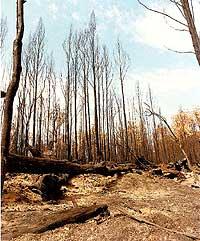
For example, the lower pine has burned quickly. Its bark was dry, almost at the height of the cork, and the drops of resin wet the trunk, there and here; the bark of the trunk was a perfect fuel. Yes, the skin does, but the internal does not. In fact, the interior has survived. And of course, if the interior has lasted, the tree has not died. And when the fire disappears, it is recovering.
Moreover, the pine has made a good deal of the fire. Parasites have been burned a lot and the area has been cleaned. This means that, at least from the point of view of soil fertilizers, several competing plants have disappeared. The pine roots will have a clean area for a while, the seeds germinate easily and grow stronger young pines. Finally, the pine tree will be the owner until other plants colonize this land.
Pine is fire resistant. Fire burns quickly but does not die burned, it is strong. But for many other trees that survive on the slope the fight is different, for example for the big beech from the top.
The beech looks sturdy. He never seems to die. It has been there for hundreds of years and has faced a multitude of natural disasters. Who knows what was the hardest time for him! Once again it has survived, but the struggle has not been easy.
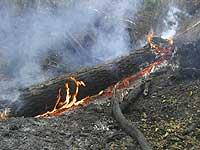
The defense of this great tree is strong, it does not burn in any way. The fire has blackened a piece of skin, but has not managed to burn. And as the skin has not burned, the tree will remain. The beech follows a strategy against the pine, with the skin as the first protector and the strongest. If the skin is burned, almost certainly, it will die because the entire interior will be burned. The fire will consume. Therefore, there is the key, in defense of the skin. However, beech does not yield much to fire, at least like pine.
A few meters below, on the hillside, another younger beech has lost one of its main branches. He is wounded. This wound may die. Around the beech, man has begun to make assessments. Is it worth leaving the beech as if it can move forward? Or is it better to remove it and plant it? How many cubic meters of wood do we speak in this case? How much does this process cost?
The wood recovered from the fire can be sold at half price, if it is possible to make a good business. Therefore, man collects the logs that have been sold. But the trunk it carries also needs nature. Many animals have refuge in fallen and semi-erected trunks. Some plants also enjoy this protection. And so, if not, erosion will slowly drag the soil.
The forest will take two hundred years to recover its structure, but if what remains is "cleansed" by man, not even in five hundred years will recover this situation. Therefore, several naturalists have proposed that everything be maintained. The fire is neither good nor bad; the fire is natural, so nature knows how to get ahead from the moment it goes out.
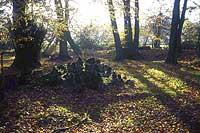
Insects begin to return to the burnt forest. The truth is that this has happened from the beginning, because there are several beetles that have to lay eggs in the barks of the calcined trees. They need heat and, when other animals fled, these insects have made the opposite way to choose the most appropriate place for larvae. There they copulate and lay eggs. The natural recovery of the forest has begun.
What will be next? Other insects? Small plants? Moss? No matter what. Over time, if allowed, the forest will also recover larger mammals. To start thinking about the new idea, right? Not for the guardians of the natural parks. They have begun to value fire, flooding and venting.
Published in 7K.

Gai honi buruzko eduki gehiago
Elhuyarrek garatutako teknologia




